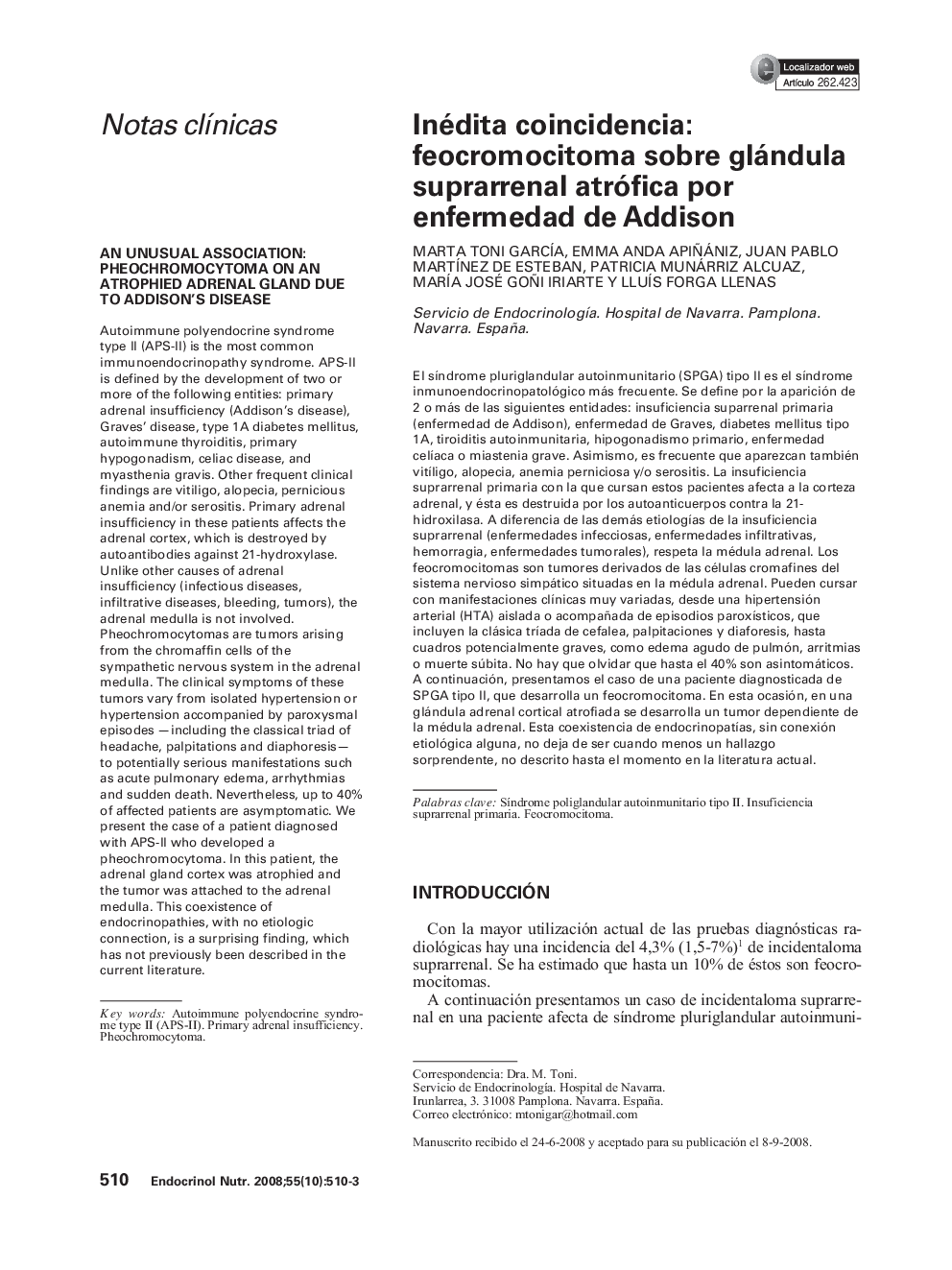| Article ID | Journal | Published Year | Pages | File Type |
|---|---|---|---|---|
| 2774419 | Endocrinología y Nutrición | 2008 | 4 Pages |
Abstract
Autoimmune polyendocrine syndrome type II (APS-II) is the most common immunoendocrinopathy syndrome. APS-II is defined by the development of two or more of the following entities: primary adrenal insufficiency (Addison's disease), Graves' disease, type 1A diabetes mellitus, autoimmune thyroiditis, primary hypogonadism, celiac disease, and myasthenia gravis. Other frequent clinical findings are vitiligo, alopecia, pernicious anemia and/or serositis. Primary adrenal insufficiency in these patients affects the adrenal cortex, which is destroyed by autoantibodies against 21-hydroxylase. Unlike other causes of adrenal insufficiency (infectious diseases, infiltrative diseases, bleeding, tumors), the adrenal medulla is not involved. Pheochromocytomas are tumors arising from the chromaffin cells of the sympathetic nervous system in the adrenal medulla. The clinical symptoms of these tumors vary from isolated hypertension or hypertension accompanied by paroxysmal episodes -including the classical triad of headache, palpitations and diaphoresis-to potentially serious manifestations such as acute pulmonary edema, arrhythmias and sudden death. Nevertheless, up to 40% of affected patients are asymptomatic. We present the case of a patient diagnosed with APS-II who developed a pheochromocytoma. In this patient, the adrenal gland cortex was atrophied and the tumor was attached to the adrenal medulla. This coexistence of endocrinopathies, with no etiologic connection, is a surprising finding, which has not previously been described in the current literature.
Related Topics
Life Sciences
Biochemistry, Genetics and Molecular Biology
Clinical Biochemistry
Authors
Marta Toni GarcÃa, Emma Anda Apiñániz, Juan Pablo, MartÃnez de Esteban, Patricia Munárriz Alcuaz, MarÃa José Goñi Iriarte, LluÃs Forga Llenas,
